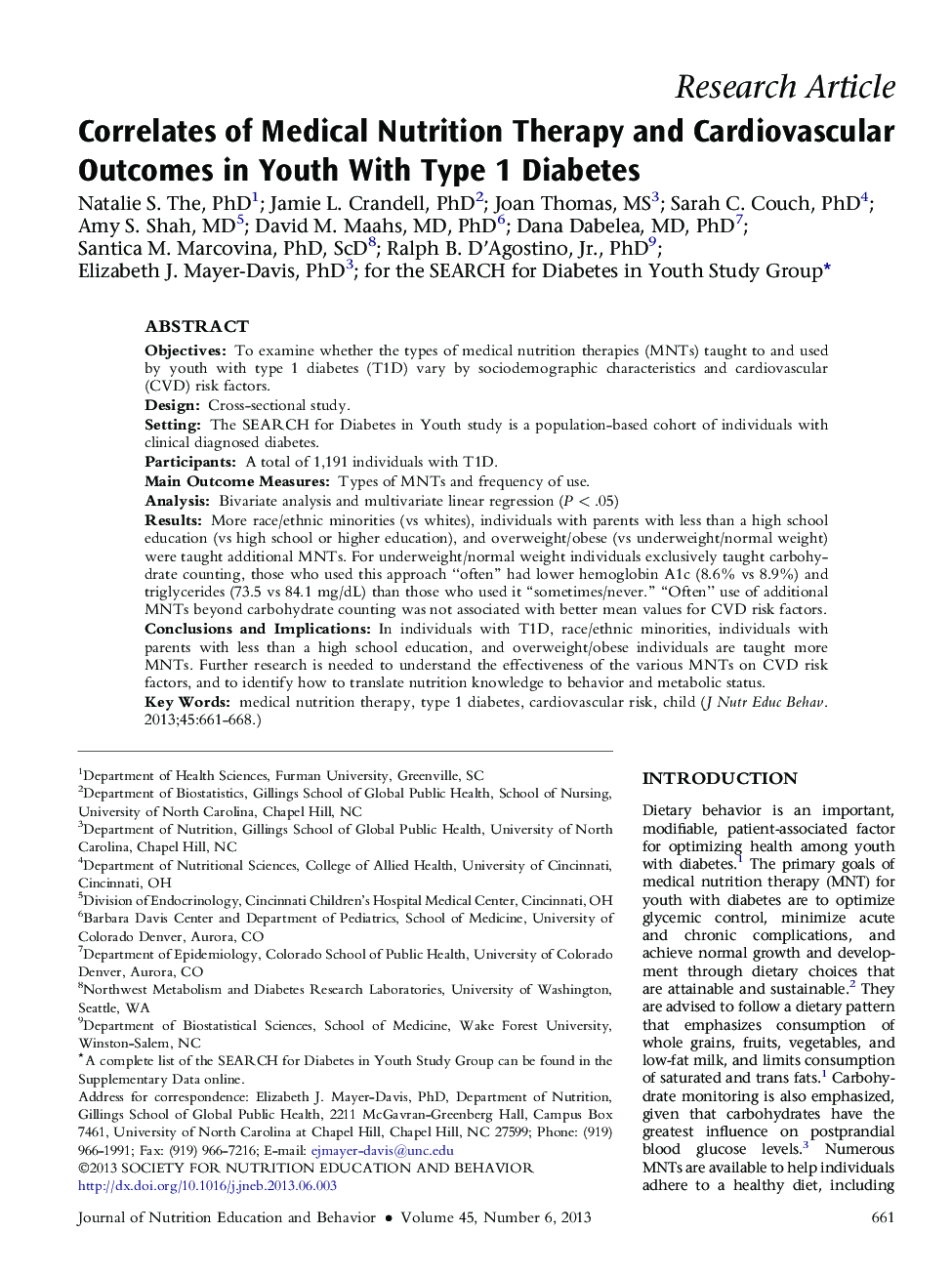| Article ID | Journal | Published Year | Pages | File Type |
|---|---|---|---|---|
| 362012 | Journal of Nutrition Education and Behavior | 2013 | 8 Pages |
ObjectivesTo examine whether the types of medical nutrition therapies (MNTs) taught to and used by youth with type 1 diabetes (T1D) vary by sociodemographic characteristics and cardiovascular (CVD) risk factors.DesignCross-sectional study.SettingThe SEARCH for Diabetes in Youth study is a population-based cohort of individuals with clinical diagnosed diabetes.ParticipantsA total of 1,191 individuals with T1D.Main Outcome MeasuresTypes of MNTs and frequency of use.AnalysisBivariate analysis and multivariate linear regression (P < .05)ResultsMore race/ethnic minorities (vs whites), individuals with parents with less than a high school education (vs high school or higher education), and overweight/obese (vs underweight/normal weight) were taught additional MNTs. For underweight/normal weight individuals exclusively taught carbohydrate counting, those who used this approach “often” had lower hemoglobin A1c (8.6% vs 8.9%) and triglycerides (73.5 vs 84.1 mg/dL) than those who used it “sometimes/never.” “Often” use of additional MNTs beyond carbohydrate counting was not associated with better mean values for CVD risk factors.Conclusions and ImplicationsIn individuals with T1D, race/ethnic minorities, individuals with parents with less than a high school education, and overweight/obese individuals are taught more MNTs. Further research is needed to understand the effectiveness of the various MNTs on CVD risk factors, and to identify how to translate nutrition knowledge to behavior and metabolic status.
